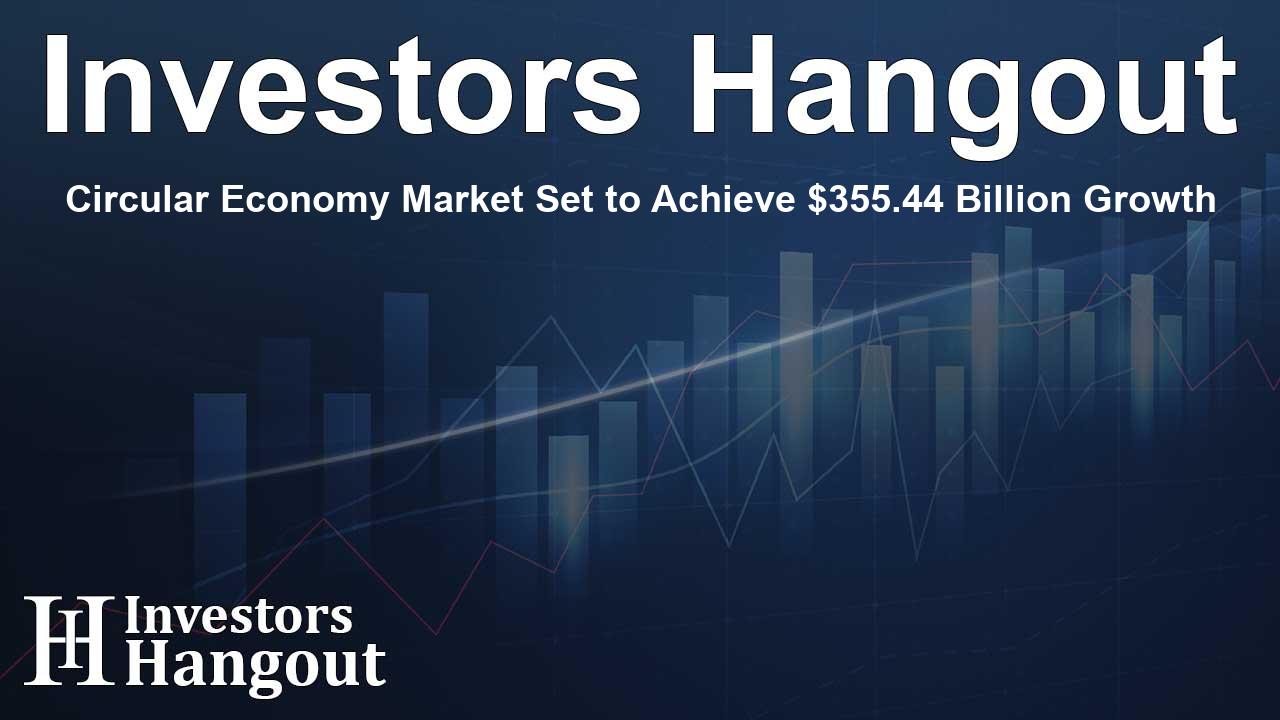Circular Economy Market Set to Achieve $355.44 Billion Growth

Future of the Circular Economy Market
The circular economy market is about to witness significant transformations as it is projected to expand from $149.86 billion in 2024 to a whopping $355.44 billion by 2032. This growth is primarily driven by increasing adoption of environmental, social, and governance (ESG) principles along with innovative recycling practices.
Understanding the Growth Drivers
One of the most crucial factors propelling this market is the escalating concern regarding waste management and resource sustainability. As waste generation continues to surge, bolstered by global population growth and consumerism, industries worldwide are confronted with the formidable challenges of waste reduction and scarce resources.
The World Bank has signaled that global waste could reach an astounding 3.4 billion tons by 2050, prompting governments to implement stricter recycling mandates and enhance resource efficiency. For instance, the European Union's Circular Economy Action Plan is a key initiative designed to lessen resource reliance while promoting sustainable production cycles across various sectors such as plastics, textiles, and electronics.
Corporate Sustainability Initiatives
Companies are becoming increasingly aware of the significance of integrating ESG considerations into their operational frameworks. Corporate giants are leading the charge; in 2023, Apple revealed that a considerable portion of the materials used in its products stemmed from recycled sources, highlighting the company's proactive stances in addressing waste and resource scarcity.
Furthermore, the rise of corporate sustainability goals has heralded an era where ESG compliance is crucial for executive performance metrics. According to reports, a notable increase in the adoption of ESG measures has occurred; for instance, a 14% jump in companies focusing on ESG metrics was documented between 2022 and 2023, demonstrating a growing commitment to sustainable business practices.
Overcoming Technological Hurdles
Despite the positive momentum, challenges abound, particularly relating to the complexities encountered in recycling diverse materials. Many contemporary products, including electronics and multi-layered packaging, present difficulties in terms of dismantling and recycling. Often the lack of sophisticated sorting technologies leads to diminished recovery rates and escalated processing costs, inhibiting market potential.
For example, recovering rare earth elements from electronic waste is fraught with both technical and economic challenges. Addressing these technological shortcomings will be pivotal in unlocking the full benefits of a circular economy.
Innovations in Circular Packaging
The shift towards circular packaging solutions signifies a substantial opportunity within this space. Brands are now eager to transition away from single-use plastics and engage with recyclable, reusable, and biodegradable packaging alternatives. Companies like Unilever and Nestlé are spearheading this movement by rolling out refillable packaging models aimed at reducing waste.
The retail sector is also making strides with brands such as IKEA opting for compostable and paper-based packaging materials, thus working towards sustainability objectives. Legislative support is reinforcing such transitions, with many governments implementing bans on single-use plastics and enabling producer responsibility programs.
The Role of the Automotive Industry
The automotive sector is increasingly becoming a key player in the circular economy narrative. Leading manufacturers like DENSO and BMW are establishing bold sustainability benchmarks. DENSO is creating divisions focused on circularity, aspiring to achieve high recycling rates for vehicle materials. On the other hand, BMW is emphasizing the inclusion of secondary materials in its manufacturing process, which not only cuts down environmental impact but also addresses pressing social responsibilities.
North America's Leadership in Circular Economy
In North America, considerable progress is visible as large-scale initiatives and policies drive circular economy adoption. The Plastics Pact has reported a marked increase in sustainable packaging practices, reflecting a regional commitment to the cause. Companies like Eastman are amplifying innovation efforts, for example, by establishing a state-of-the-art recycling facility for hard-to-recycle plastics, showcasing corporate responsibility toward sustainability.
Conclusion: The Path Ahead
In conclusion, the circular economy market stands at the precipice of significant growth driven by collective actions from industries, governmental policies, and heightened consumer awareness regarding sustainability. Despite challenges associated with complex material recycling, innovations continue to emerge, promising a more robust circular economy that maximizes resource efficiency and minimizes waste generation.
Frequently Asked Questions
What is the projected growth of the circular economy market?
The circular economy market is expected to grow from $149.86 billion in 2024 to $355.44 billion by 2032.
What factors are driving the growth of this market?
Key drivers include ESG adoption, growing demand for sustainable practices, and increased recycling innovation.
What challenges does the market face?
Challenges include technological difficulties in recycling complex materials and low recovery rates in current processes.
How are companies adapting to sustainability goals?
Companies are integrating ESG measures into their performance frameworks, promoting sustainable practices across their operations.
What role does the automotive industry play?
The automotive industry is fostering the circular economy through ambitious recycling targets and the adoption of secondary materials in manufacturing.
About The Author
Contact Riley Hayes privately here. Or send an email with ATTN: Riley Hayes as the subject to contact@investorshangout.com.
About Investors Hangout
Investors Hangout is a leading online stock forum for financial discussion and learning, offering a wide range of free tools and resources. It draws in traders of all levels, who exchange market knowledge, investigate trading tactics, and keep an eye on industry developments in real time. Featuring financial articles, stock message boards, quotes, charts, company profiles, and live news updates. Through cooperative learning and a wealth of informational resources, it helps users from novices creating their first portfolios to experts honing their techniques. Join Investors Hangout today: https://investorshangout.com/
The content of this article is based on factual, publicly available information and does not represent legal, financial, or investment advice. Investors Hangout does not offer financial advice, and the author is not a licensed financial advisor. Consult a qualified advisor before making any financial or investment decisions based on this article. This article should not be considered advice to purchase, sell, or hold any securities or other investments. If any of the material provided here is inaccurate, please contact us for corrections.
